Chile, Chilly, Chili
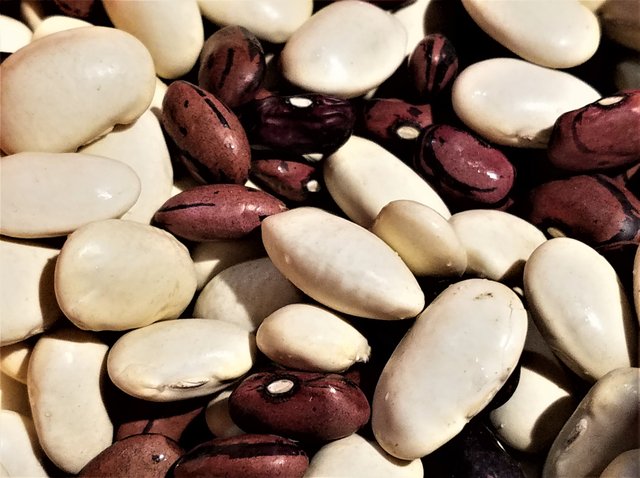
For non-native speakers, this must be a confusing group of words in the English language. "Chile, chilly, and chili" include the name of a country and words for both hot peppers and cold temperatures. The word “chili” also refers to a heavy soup that can be made with beans, beef, and/or various meats along with vegetables and spices. Because it’s thick and heavily flavored, you can hide a lot of vegetables in chili.
When summer weather is hot, the last thing I want to be doing is cooking over a hot stove. But one does not have the luxury to avoid it when the refrigerator is full of vegetables from a bountiful garden. We froze, dried, or canned some for later use. We ate some raw or lightly cooked in other dishes. But after opening the refrigerator and STILL seeing this many vegetables, I resolved to make some chili. No meat in this one, just vegetarian.
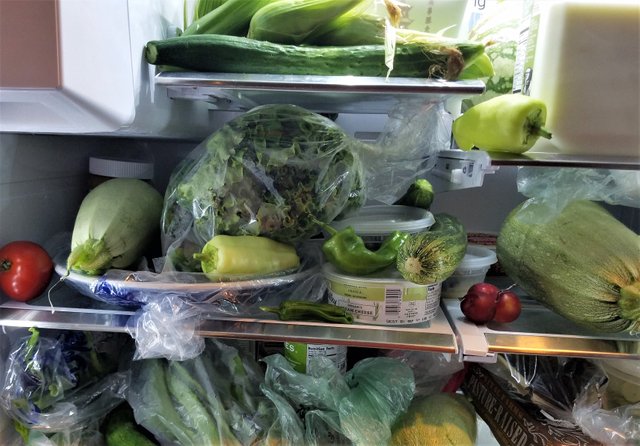
Fortunately, we had plenty of dry beans since we buy them and then are too lazy to cook them up. Not too lazy this time! I gathered several kinds of beans from their shelf: some heirloom red Rio Zape beans, Italian butter beans, flageolets, and black-eyed peas. Together, they looked like this. On balance, a little whiter than usual, but when you're making chili, the bean color doesn't matter.

One, two, three, four kinds of beans…wait, that number does not work. Three Bean Chili or Five Bean Chili sound good, but I can’t make a good title from four. That’s too comfortable. Creativity demands an edge which doesn’t come from using even numbers. I searched the cupboard for one more kind of beans under the threat of having to put back one of these kinds if there wasn’t a fifth.
The choice of which kind to put back was not that difficult. The red beans are perfect for chili. The butter beans will break down and make a thick soup. The black-eyed peas are a great, nutty-flavored addition to any stew and, being a different species of legume, bring a slightly different nutritional profile than other beans. The flageolets were first in line on the chopping block, as they may be too firm for chili unless cooked into submission. These are young beans that are picked early and dried, so their off-white beige color retains a hint of green. I’d return them to the shelf if there’s nothing else.
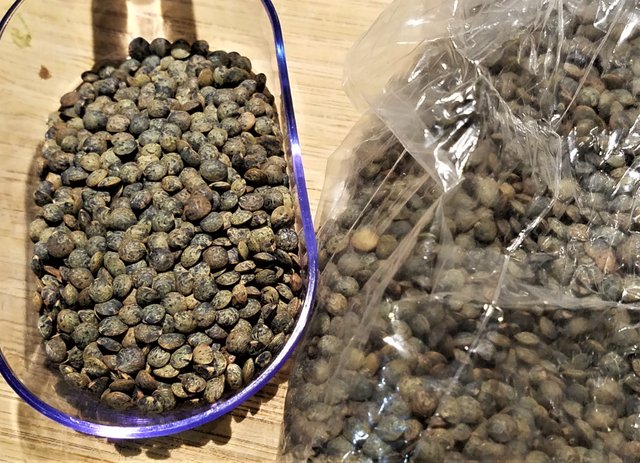
Aha. There was a bag of French green lentils hiding behind some cans. I didn’t want to know how long they’d been there. Still just fine. Plenty of protein, fiber, iron, and other minerals. I rinsed a cup of them and added these lentils to the pot.
It’s best to soak beans overnight and then pour out the soak water before cooking them. This step improves digestibility. I use salted water with a slice of ginger in it. The next morning, after cooking the beans for awhile in water, it was time for basic seasoning. I’m not a chef, since I don’t like to use recipes or specific amounts. I cook by taste and keep adjusting ingredients until the taste is awesome.
The basics here include a bay leaf, which I think belongs in every bean dish. I also include a small slice of ginger and a handful of dried kelp (kombu). Together, these ingredients help condition meat or bean protein, much like the Mexican/Central American herb epazote, which I do not use. In using kelp, just a couple of small pieces should be enough. You don’t want the beans tasting like a sushi roll. But unlike some cooks, I never take out the kelp; I let it cook in completely and disappear. It adds to the background flavor and contributes a broad range of trace minerals.

My chili continued to cook, but did not get much further before I added sea salt and some chopped onions and peppers. Other vegetables can wait, but onions and peppers are the heart of the flavor for good chili and I want them cooked into these beans early on. How spicy you make it depends on you; I add both sweet and hot peppers. Then I shake in some spices like chili powder, cumin, and a big dash of curry powder (that may be the secret ingredient, so don’t tell anyone). I’ll also add the tomato influence at that time, which can come from a can of tomato paste, some leftover tomato sauce, or chopped fresh tomatoes. Whatever you use, it will cook in and give the soup some tomatoey background.

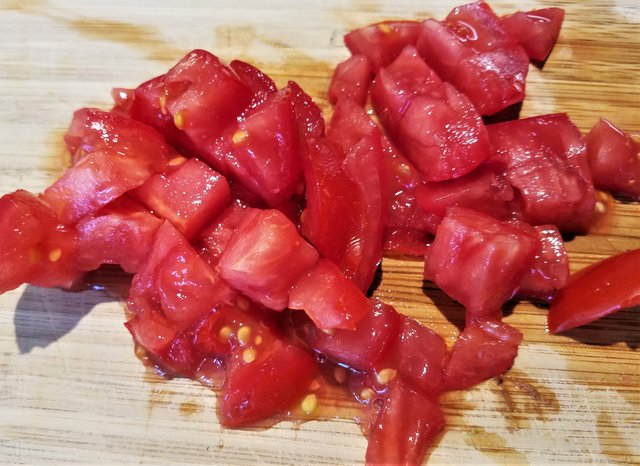
Finally, as the beans cook up and a soup develops around them, it’s ready for other vegetables. Timing the veggies is difficult if you want them to taste fresh rather than overcooked. At the same time, the longer you cook them in, the more flavor they will impart, so it’s a tough decision. I reserve some vegetables for the very end, such as crushed garlic, additional tomatoes, and maybe even a pepper, but will put in others while it’s cooking. Any fresh herbs, such as basil, oregano, marjoram, thyme, sage, rosemary, and parsley: each one changes the flavor, but I’ll gladly add to this dish anything we have available at the time.
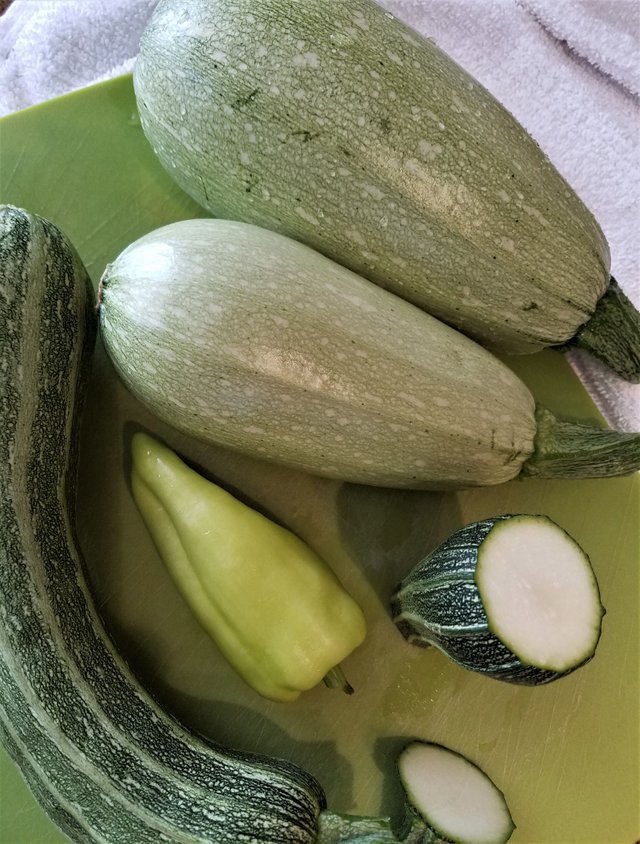
In this stew, I chopped and added in a lot of zucchini (summer squash) because there’s so much of it coming from our garden. I also included some chopped potatoes, carrots, and a handful of parsley that survived the garden’s summer heat. Some of the garlic went in then for overall flavor, while the remainder was reserved for the end. Some people will add some ground beef or turkey or chop up some sausage, but I went vegetarian with this. There was some dried maitake mushroom on the shelf, which I like for its smoky aroma, in small doses.
The last bit of garlic and vegetables were added right before I turned off the stove; they get cooked just enough that they are no longer raw, but they still have enough flavor to give the dish some late life. Cilantro is another great late addition, but I didn’t have any this time. You can always add more tomatoes, even towards the end if you want them to freshen it up.

When the beans are cooked through, it’s time to taste and fine-tune the flavoring. Black pepper, more salt, additional spices if needed. Yummy. This soup/stew was so good that even my kids slurped it up. It paired really well with cornbread. Good stuff, Maynard.
I’m sorry I don’t have a chili recipe for you, but after two hours of stirring and adding random ingredients whenever I felt like it, I have no idea what how much I used of anything to make the chili. It doesn’t have to be perfect and I’ve never made the same chili twice; it’s always somewhat unique because of available ingredients and the cook's whims. As long as you cook beans and then add onions, peppers, a bay leaf, a can of tomato paste, some chili powder, enough salt, and plenty of garlic, being willing to taste-test it and make needed adjustments, you simply cannot make bad chili!
Don’t forget to leave a window open after you eat it.
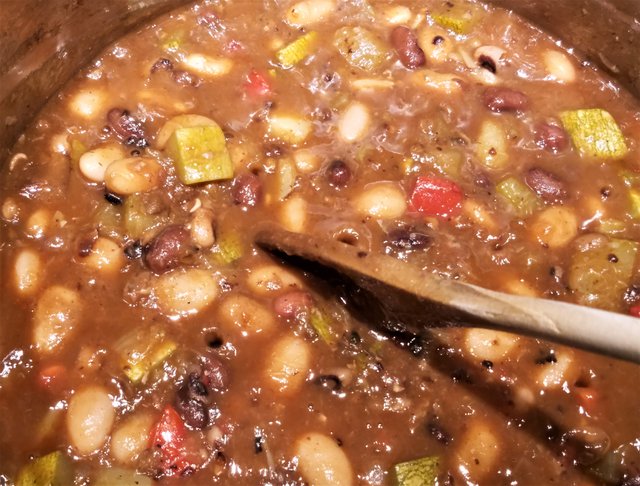
Woah, this must be a really delicious meal as it looks..
I think pretty much everyone feels so lazy to cook beans. I have a stack of beans covered up in my kitchen that I never touch.
Seeing the way yours turns out to be, I think I may have to go back to cooking beans pretty soon.
Cheers
Yes, I wish I was better about cooking them also. It's usually in the cooler winter months that I get around to it, but had to use some of those veggies. :)
My lungs just salivating over the beans, wish i was closer to you would request a dinner in your place.. .smiling...
Oh yeah... I see
Looks pretty good, I'm sure it'd taste as sweet as it looks....
Cheers
Beans are not only delicious but also nutritious. Packed with a lot of protein, vitamins and minerals which our body needs every to maintain normally healthy. Excellent choice for vegetarians. Red chili also has anti-inflammatory and anti-fungi properties that healing pain and preventing cancer. I often enjoy eating these stuffs. Cheer!
Posted using Partiko Android
Apart from wanting to taste this delicious chilli stew @donkeypong you made me want to experiment this myself. Only that some of these spices and ingredients are not really found here but if not all I can still use some available ones to make something as this. Thank you for sharing, you have my stomach leaping for joy at the sight of this dish.
You can use anything you have and like to eat. Enjoy!
I am like you when it comes to cooking. I eat to live, so I am not fussy about food, nor am I really interested in cooking. So, I will see what's available in the fridge and cooked up something. And they never taste the same twice, because at times, i will have more of this or add less of that. I only know that my dishes are healthy, perfectly edible, and very nutritious. :-)
That's right. That's the best way. I never use a recipe unless I need to get a ratio of proportions for something. Generally, I rarely cook the same thing twice.
I am glad that I am not the only one who feels this way. Cheers! :-)
Thanks for this great sharing. I like chili most in my food. Over here, our beans are quite small and tinny but that's not a big deal. You made delicious and spicy soup. Tomatos makes a great and thick effect on dish. Its make redish and tasty.
That's right. You can use any kind of beans and when you add tomatoes, it makes a nice thick base.
Wow...Looks like very delicious soup...I was little bit confused after starting reading your post that how it gonna end up with..how its colour would be.....But after finishing the blog i was quite amused.Surely worth a try....Thank you for sharing.
If you mix together enough things, it ends up brown. :)
Wow, little did I know one could cook different kinds of beans all together. You call this "chilli beans", right? Am reblogging this post because I love it and I want to have it reserved on my blog wall.
Thanks for sharing.
Yes, it's bean chili. Basically, you can put whatever you want in it.
Friend, how are you? as always I learn something from you, today you show us a facet of you that did not know those beans look great, you use so many herbs that the smell came to Venezuela, I did not know this recipe of chili so it is a great experience to have been to read your exciting adventure in the kitchen
It also happens to me that I'm too lazy to cook beans but after I do it I say it was worth it, I learned some tips from you so thank you for that
Greetings from Venezuela!
I'm sure you have some delicious dishes there also!
Yes, we have many, thank you!
I didn't envisage you as a foodie you know, but to see so many types of legumes, the white and the darkened one. I'm only used to the darkened pod and we cook it without a spice and prepare a stew of onions, tomato, table oil and spices
But I see you're definitely cooking the beans with tomato and the rest spice? Wow
That sounds good also. I'm not much of a foodie, but occasionally I get into it.
Hahahaha wow that side of you sounds so enticing
As the ROCK would say; "Do you smell what the donkeyponk is cooking!"
Great tip of pre-soaking the beans... not only do they digest better but they cook quicker.
Also liked your tip about adding the veggies later after cooking the beans first, SURE DOES taste better.
Thanks.
I just realised I never really knew how to spell chilly when it has to mean chilly haha. Chili (didn't know chili can mean soup either) soup looks heavy, it reminds me of an Iranian lamb and chickpea stew called Abgoosht.
It is heavy and high in protein.